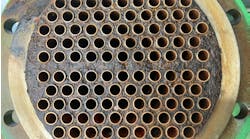Everyone understood the criticality of this project. The leaking, abused caustic tank required replacement. Tank inspectors had given us no more than five years and the tank has sprung two leaks since inspection.
Yet, something as mundane as a tank replacement rarely gets priority over sexier projects especially when it involves a lot of money (over $2 million if we went with every option proposed). Indeed, despite the clear need, someone at the plant suggested we let an engineering firm do a study. I’d already spent months in scope development, so this seemed to be throwing money away.
Instead, I suggested a staged project. We’d proceed in steps: first, develop the tank design, then build the pad and, finally, install the equipment and pipeline. Construction would extend over several months. We’d use consultants but only in tactical, targeted ways. I think a major reason for over-runs is because work is rushed and unplanned. With a staged project, you stop work when an obstacle appears and don’t restart until you’ve found a good solution.
[pullquote]
With today’s low inflation, extending the timeline for a few months doesn’t impose much of a cost penalty.
In addition, you can employ maintenance resources for linear work like pipelines and equipment installation. I reckon that maintenance personnel are waiting for materials, doing routine shop work or even taking inventory perhaps a third of the time. Over the years, I’ve had more than one welder who wanted to keep busy ask if any project work needed doing.
I don’t advise counting on maintenance for tie-ins and other key project completions that only can be performed during shutdowns. At those times, maintenance can’t spare the personnel; construction companies, especially if they are union, can go to the union hall to recruit additional help if needed.
I once served on a project to install and commission a new reactor. We only had maintenance personnel. When two problems occurred elsewhere (in a vaporizer and a distillation column), we lost all maintenance support. I took up instrument calibration while most of our engineering staff joined maintenance to solve our two outage problems. What should have been a three-day effort turned into a ten-day one.
Also, inspectors, i.e., for tanks, pumps and other things, can’t wait for plant staff to eventually return; constructors nearly always work faster than inhouse personnel. Inspectors will be busy doing other inspections during a shutdown.
Of course, there are limits to inhouse resources. A big project, one above $10–20 million, may require a consultant. An operating company likely lacks specialized staff such as pipe and vessel inspectors, surveyors, engineers in certain disciplines, experts in particular technology, and specialists in environmental construction or regulation. At one time, equipment companies provided expertise — but that time is long gone.
I’m assuming your company still has some inhouse resources for project engineering. It seems that whenever an investment company buys a chemical plant or refinery, decimating the engineering staff becomes a priority — at least until an accident when the company realizes it’s in over its head.
I don’t advise using production engineers as project engineers. I kidded one production supervisor that the next time he did a project without a project engineer he should invite me and my friends over for the startup: we’d sit in the parking lot with beer coolers and laugh our heads off. He didn’t get the joke. There’s a process for building something as much as there’s a process for making a product. You can get staff to develop that kind of expertise but it takes time.
One bonus in doing projects in stages using more inhouse resources is that it provides a way to educate younger staff. They won’t learn much about construction watching someone else do it. On the other hand, you don’t want to overtax your inhouse staff with construction deadlines and production requirements.
Another fringe benefit may be better drawings. So seldom are as-built drawings done at all, let alone accurately, that I am utterly surprised when I see one. Slowing progress down so that details aren’t lost or misinterpreted seems to me to be worth consideration. (For a way to address discrepancies among what’s actually in the field, on drawings and in the asset list, see “Ensure You’ve Got an Accurate Asset List.”)



